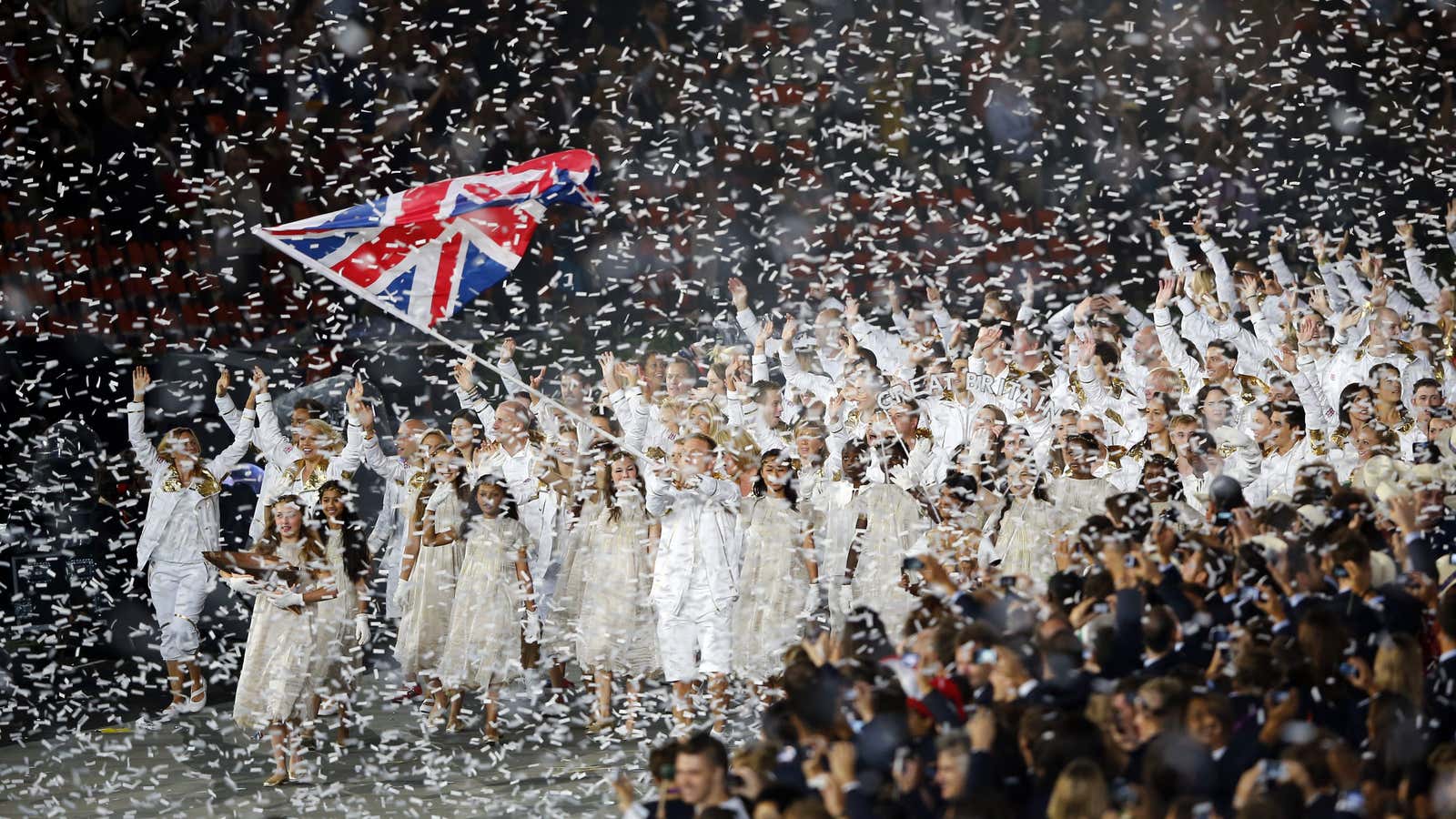Athletes from more than 200 countries will march into Rio de Janeiro’s Maracanã stadium this evening to open the summer Olympics. The procession, known as the parade of nations, has been a mainstay feature of Olympic opening ceremonies since the 1908 London games. These days, it can stretch for nearly two hours.
To get attention, therefore, it’s best to be either up front or making a grand entrance at the end; those in the middle will be lost in a sea of nations and their flags. Alas, their position in the parade is one thing the athletes can’t compete for.
Under the games’ precise protocol, Greece always marches first (in a nod to its status as the first nation to ever hold both the modern and ancient versions of the Olympics). The host country always goes last. For the rest, the parade follows alphabetical order in the local tongue—in the case of the Rio games, Portuguese.
In some Olympics, the local language plays in a country’s favor; others, not so much. In the London 2012 games, for example, the US walked almost last, when excitement in the stadium was reaching its peak. But its name in Portuguese is “Estados Unidos,” so it will be in the middle of the pack in Rio.
Others are luckier. South Africa (“Africa do Sul”) moves up to the front. During the 2008 Beijing Olympics, Australia was among the last to make an appearance. In Rio, the country is back close to the start of the line.
Here’s the list of participating countries (pdf) in their Portuguese alphabetical order, bookmarked by Greece and Brazil. The team of refugee athletes will appear next to last, per the International Olympic Committee.
Correction (Aug 8): The list of countries in a previous version of this item was based on the list of Olympics’ participants provided by Rio 2016 organizers. It’s now based on the list provided by the International Olympic Committee, which was used to determine the order during the opening ceremony. The two used different criteria to alphabetize the countries’ names.
